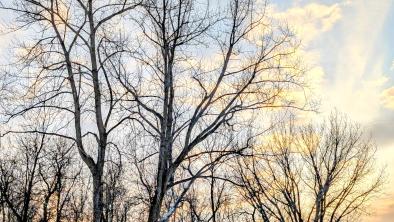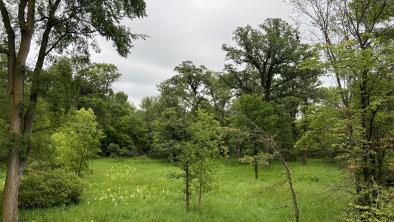A Prairie Still Standing Tall, Barely
Canadian Geographic
Once covering 6,000 square kilometres in Manitoba’s Red River valley, the tallgrass prairie has all but vanished from the Canadian landscape.
Cultural references to it abound in Manitoba but tallgrass prairie has almost vanished from the Canadian landscape. Once covering 6,000 square kilometres in Manitoba’s Red River valley, it is now relegated to less than one percent of its historic range, largely a victim of agriculture, urbanization and industrialization.
“It’s one of the world’s most endangered ecosystems,” says Kyle Lucyk, director of Winnipeg’s Living Prairie Museum. Manitoba has Canada’s largest area of tallgrass prairie, but there are also small pockets in southwestern Ontario.
Tallgrass prairie is known for its sealike swaying grasses and the density of its various native flora. It prospers in disturbance-prone environments — disturbance that was provided historically by fire and bison, which prevented the ecosystem from morphing into woodland.
The remaining patches of tallgrass provide vital host plants for pollinators such as monarch butterflies, overwintering sites for badgers, shrews and animals and even a buffer against spring flooding, all the while rejuvenating the soil. An estimated 1,000 plant and animal species are ecologically tied to tallgrass, including 10 endangered species. Canadian sightings of the rare Poweshiek skipperling butterfly occur only in this biome, which also hosts the largest Canadian population of the Western prairie fringed orchid.
“Many pollinators use these prairie plants in their life cycle,” says Lucyk, “and they have to return to these plants. Agriculture depends on these pollinators, and these pollinators depend on these prairie plants.”
Studying the loss of tallgrass prairie over time, researchers at the University of Manitoba have found that its range has declined by more than one-third since the 1980s. They noted that smaller areas of tallgrass prairie, in particular, have suffered; 21 square hectares appears to be the threshold for whether a patch can thrive or expand farther. But the researchers also found that the average patch size increased, perhaps because smaller patches are disappearing.
“They’re at the point where they’re so degraded, they’re not self-sustaining,” says University of Manitoba researcher Nicola Koper. “We’re not in the position where you can just leave them on their own. They’re too small at this point.”
Conservation organizations have stepped forward to maintain the tallgrass prairie, using prescribed burnings, controlled grazing and haying and other activities to strengthen it. Populations of small white lady’s-slipper and Western prairie fringed orchid thrive in well-hayed areas.
“The areas where there’s been active management have had increases in size and quality,” says Koper. “Benign neglect doesn’t work with tallgrass prairie.”


